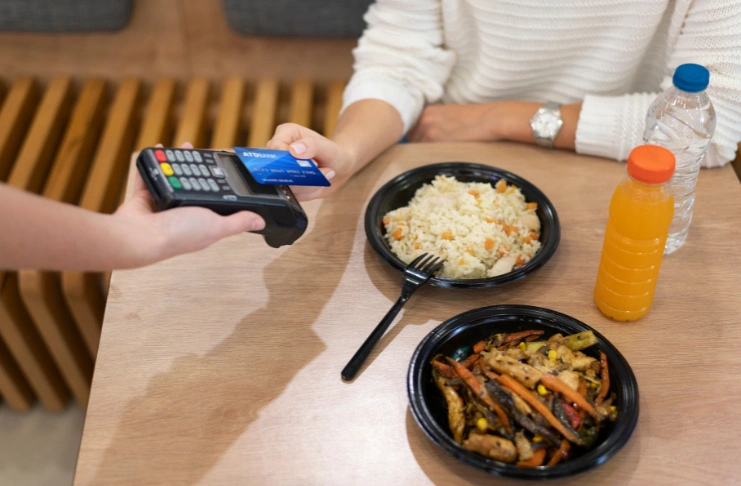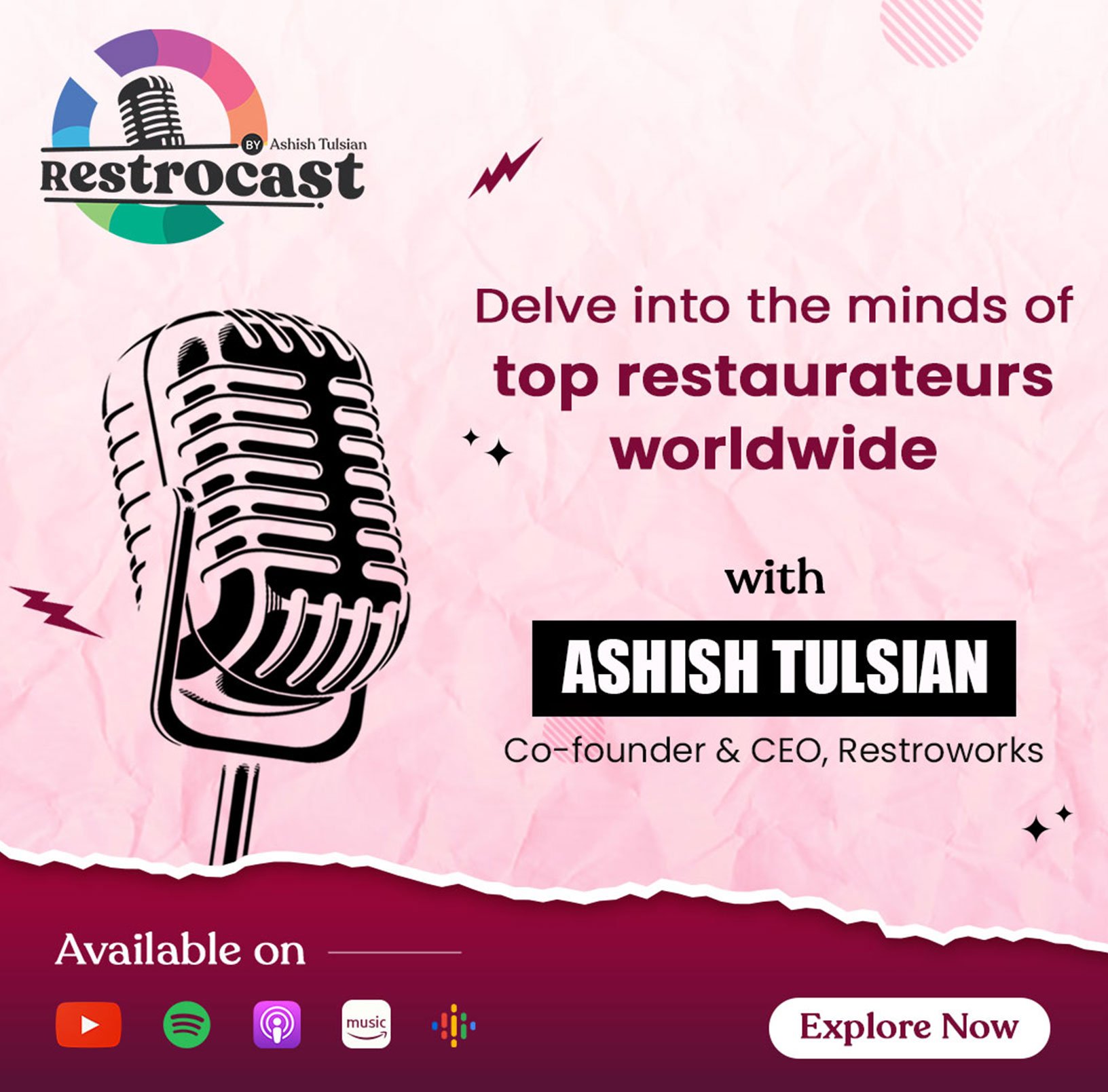
Customer retention is one of the most important growth drivers in the restaurant business. While many operators focus heavily on attracting new customers, the real value often lies in getting existing ones to come back more often. According to Bain & Company, increasing customer retention by just 5% can boost profits by 25% to 95%.
Despite this, the average retention rate in the restaurant industry remains low, with many operators losing out on long-term revenue due to poor follow-up, generic loyalty programs, or inconsistent experiences.
In a market where digital ordering, rising costs, and shifting consumer habits are defining growth, retaining diners has become more challenging, and critical than ever.
This blog explores the latest customer retention statistics in restaurants in 2025, current customer loyalty trends, and what makes customers return to your restaurant.
The Cost of Acquisition For Restaurants
According to industry data, acquiring a new customer costs 5-7 times more than retaining an existing one. What’s more, existing customers spend an average of 67% more per order than first-timers. For restaurants, this means nurturing your current guests can significantly boost revenue, without incurring additional ad spend.
And that’s a huge upside for what can be a modest investment.
To see why customer retention is crucial, here’s a breakdown of the acquisition costs for different restaurant segments and price points-
- Fast casual: For an average customer spend of $16-$25, the paid customer acquisition cost (CAC) is around $83.20.
- Fast food: Average CAC is $27.04 for an average price point of $15.
- Casual dining: Average CAC is $124.68 for average spend of $26-$50.
- Fine dining: An average customer spend of $50+ has a CAC of $179.82.
At a time when margins are already thin, customer acquisition costs (CAC) are steadily increasing, especially for restaurants relying on digital channels.
With platforms like Meta, Google, and delivery aggregators becoming more saturated, restaurants are paying significantly more to get a first-time customer through the door (or app).
However, here’s the catch: without a solid retention plan, much of that spending goes to waste. Imagine spending $80+ to acquire a diner only to never see them again. That’s not just a lost customer; it’s a lost lifetime value for your restaurant.
Instead, focusing on retention pays off quickly. Returning customers are not only easier to convert, but they also spend more. They also cost much less to keep engaged, especially if loyalty programs, personalized offers, and owned channels (email, SMS) are used effectively.
Current Customer Retention Statistics for Restaurants

Experts suggest that a restaurant’s customer retention rate of 60-70% is the sweet spot for healthy, sustainable restaurant operations, but the reality across the industry is far less encouraging.
Retention benchmarks vary wildly by format, service model, and customer experience quality. Let’s break down the numbers-
- The hospitality, travel, and restaurant sector averages 55% customer retention, which is significantly lower than industries like media (84%) and financial services (78%).
- Globally, the average customer retention rate across all industries is 75.5%, putting restaurants below the global mean.
- The typical “good” repeat-customer rate for restaurants is 30% to 40%, indicating that many are converting first-timers into loyal patrons.
- A study by the National Restaurant Association shows that quick-service restaurants generate roughly 71% of sales from repeat customers, compared to 68% in fast-casual, 64% in casual dining, and 51% in fine-dining.
- Only 20-30% of restaurant revenue typically comes from new customers, with the remaining 65-80% generated by regulars, showing how critical repeat business is.
- Approximately 70% of first-time restaurant diners never come back, highlighting the need for stronger initial engagement and follow-up strategies.
- 89% of customers say excellent customer service influences their decision to return, signaling that service quality is a major retention driver.
- About 75% of consumers favor brands with loyalty rewards, showing strong customer preference for reward-based retention.
What Drives Restaurant Loyalty?
Customer satisfaction and loyalty don’t just happen; they’re earned through consistent performance across several key areas. Here are the various factors that keep customers coming back-
1. Consistent Service Quality
Loyalty begins with delivering on expectations, every time. Inconsistent food quality or poor experience is one of the fastest ways to lose loyal customers, especially in chains or multi-location setups where guests expect a standardized experience.
In QSRs, 70% of customers say order accuracy is a key factor in their experience, and 64% value consistency across locations.
For QSRs and casual dining brands, this means investing in SOPs, supplier standardization, and real-time kitchen quality monitoring systems to maintain taste and presentation across channels.
2. Personalization
Personalization is a key differentiator that directly impacts retention and revenue within the industry. Restaurants that use customer data to send targeted offers based on order history, dining frequency, or even dietary preferences see better ROI on their marketing spend.
In fact, customers expect it. Within QSR, 45% of customers expect personalization based on order history, while 72% are more likely to return when personalized offers are used. A good way to do this is to link loyalty accounts to ordering systems so that recommendations, offers, and messaging resonate with individual preferences.

3. Speed of Service
In fast-paced dining formats like delivery and drive-thru, every second counts. The speed of your service can make or break the customer experience. A recent National Restaurant Association report found 95% of consumers find speed “critical,” and 90% see it as a priority.
4. Digital Experience
For modern consumers, frictionless digital experiences are a baseline expectation. Features such as mobile ordering, hassle-free online payment, loyalty integration, in-app feedback, and more are critical for keeping the customer engaged and invested.
It also helps reduce friction in the guest journey, capture real-time customer feedback, and unlock upsell opportunities, making it easier for operators to attract and retain customers.
5. Brand Connection
Beyond functional aspects, emotional loyalty is what creates long-term brand advocates. For restaurants, it means creating meaningful, memorable experiences that make guests feel seen, appreciated, and eager to come back.
This includes all aspects of the dining experience, from the ambiance, food taste, and quality to staff interaction, ease of ordering, and seamless payments. Restaurant chains with higher customer engagement tend to outperform those with lower engagement, with an average gross margin of 29% compared to 12%.
The Role of Loyalty Programs in Customer Retention
Loyalty programs are powerful engines for turning one-time diners into repeat guests and growing their lifetime value. By rewarding behavior, capturing data, and delivering tailored experiences, these programs improve visit frequency and deepen emotional attachment.
Here are a few industry-specific statistics that reveal how loyalty programs directly impact customer retention and growth-
- 57% of restaurants have implemented loyalty or rewards programs, underlining how common they’ve become in mainstream operations.
- Loyalty program members visit restaurants 20% more frequently and spend 20% higher per visit compared to non-members, translating to higher revenue.
- Features like in-app rewards, mobile ordering, or online payments lead to more frequent visits. In fact, restaurants with mobile-responsive loyalty programs have seen a 60% increase in customer spending.
- 57% of diners say they’d spend more if a loyalty program were available, highlighting untapped spending potential through rewards.
- As of 2021, 41.6% of QSR customers are actively enrolled in a loyalty program, up from 36.2%, reflecting growing digital adoption.
- 55% of customers visit restaurants offering loyalty programs at least twice a month, indicating a strong preference for loyalty programs in restaurants.
- 73% of customers say they would recommend a restaurant with a good loyalty program, turning members into word-of-mouth promoters.
EXPERT OPINION
Savneet Singh, CEO and President of PAR Technology, says, “In the last couple of years, we’ve seen changes in consumer behavior within the restaurant industry, mainly due to the pandemic and the emergence of Millennial and Gen-Z consumers. These younger generations value convenience, online food delivery, and personalized experiences. There’s a strong desire to look beyond just the food and feel connected to the brand.
To make this new relationship work, loyalty is moving beyond traditional incentives, primarily discounting. Restaurants now understand the importance of providing seamless dining experiences, elevating the brand experience, and developing personalized touchpoints.
Restaurant Technology in Customer Retention
Technology has become the backbone of a loyalty-first strategy. When implemented strategically, it empowers restaurants to improve guest relationships, reduce friction, and ensure a seamless dining experience. Some of these key technologies include-
1. Restaurant Apps
If your restaurant doesn’t have a mobile ordering app, you’re missing a golden opportunity. Operators using apps see a 112% higher reorder rate compared to those without one.
The reason is simple: apps reduce friction in ordering and dining. Customers can save preferences in the app, make seamless payments, and even view the menu using a QR code. Mobile apps thus remove barriers that typically lead to churn.
2. Self-Service Kiosks
Self-service kiosks put control in the hands of the customers. They allow customers to explore the menu, order at their own pace, and pay directly without interacting with the staff. This not only increases order accuracy and reduces wait times, but also increases the average spending by 20% and visit frequency — all thanks to the convenience customers get.
For restaurants, kiosks free the staff for customer care rather than replacing them, making the operations highly efficient.
3. QR Code Menus
Most of the time, retention isn’t about loyalty programs, but about making the dining experience easy and efficient. Technologies like QR menus and online payments speed up every interaction, from ordering to checkout, which customers increasingly value.
Especially for Gen Z and millennials, convenience is loyalty. By eliminating the wait to order or pay, you reduce frustration points and eliminate the reasons for customers to try someone else next time.

4. CRM Systems
Smart CRMs are helping restaurants get more precise with their outreach. Rather than sending blanket offers, operators can now target guests based on order history, frequency, and eating preferences.
For instance, when a guest receives a notification with personalized offers for their next visit, it reminds them that the brand pays attention. This eventually helps build loyalty and drive repeat visits.
5. Integrated Restaurant Management Systems
Retention grows when your POS system, CRM, loyalty platform, and online ordering systems are integrated. This allows for seamless, consistent experiences: customers earn and redeem rewards whether they dine in, order online, or use the app.
Conclusion
So, what keeps customers coming back? It’s not just good food. It’s consistent quality, relevance of offers, exceptional customer service, convenience of digital touchpoints, and emotional affinity built through brand connection. Retention is earned through every interaction, and today’s most successful restaurants know it.
From the high acquisition costs to the rising expectations around personalization and digital ease, the restaurant customer retention statistics show that loyalty is no longer earned passively. Restaurants need to actively build for it through quality, smarter technology, and experiences that customers want to return to.
Frequently Asked Questions
In the restaurant industry, the rate of customer retention is at 55%, lower than most industries.
Yes, a 70% customer retention rate is considered strong in the restaurant industry.
The 3 R’s are Rewards, Relevance, and Recognition. Rewards keep customers engaged through tangible value, relevance ensures offers and communication are personalized for customer behavior, and recognition makes customers feel seen and appreciated, strengthening emotional loyalty.
Within the restaurant industry, the reasonable customer retention rate is at 60-70%.
QSRs often aim for higher customer retention rates, around 70% to 80%, as customers tend to make repeat purchases due to affordability and convenience.








